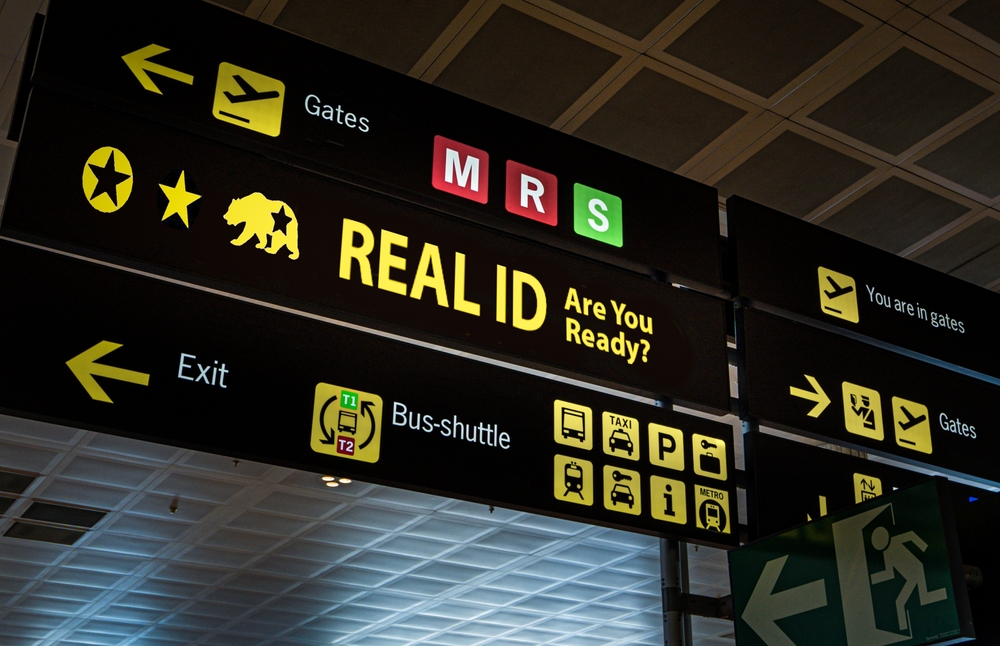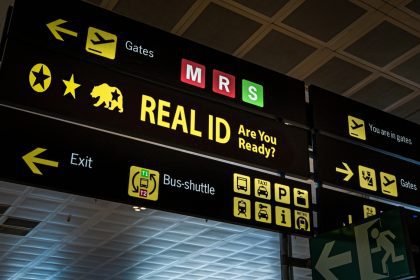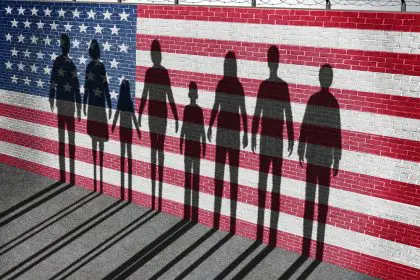The Department of Homeland Security’s long-delayed enforcement of Real ID requirements begins May 7, creating an urgent deadline for travelers who rely on standard driver’s licenses for domestic air travel. This imminent change affects millions of Americans who have yet to obtain compliant identification, potentially disrupting travel plans for those unprepared for the new requirements.
This implementation represents the culmination of a process that began more than two decades ago following the September 11 attacks. Understanding the specifics of Real ID requirements, identification options, and application procedures has now become essential for anyone planning to board domestic flights after the deadline.
What Real ID means for travelers
Real ID implementation stems from recommendations by the 9/11 Commission formed in 2002 during the George W. Bush administration. The commission urged the federal government to establish stronger standards for identification documents such as driver’s licenses. Congress formally enacted these recommendations through the Real ID Act of 2005.
Beyond domestic air travel, Real ID-compliant identification will be necessary to access certain federal facilities and nuclear power plants across the country. This represents a significant expansion of identification requirements for activities many Americans regularly undertake, particularly air travel.
Despite the May 7 enforcement deadline, it’s important to note that Real ID does not serve as proof of citizenship according to Homeland Security. The identification upgrade focuses on document security and verification rather than establishing citizenship status, though it does require proof of legal presence in the United States during the application process.
How to identify Real ID-compliant cards
Real ID-compliant identification cards feature distinctive markings that distinguish them from standard licenses and identification documents. The most common indicator is a star marking located on the upper portion of the card, which serves as visual confirmation of compliance with federal standards.
The specific appearance of this star can vary by state, with possible variations including a gold star, black star, gold circle with white star cutout, or black circle with white star cutout. Some states have implemented unique designs while maintaining compliance, such as California’s gold grizzly bear with a white star cutout or New York’s star or US flag markings on their Real IDs and enhanced licenses.
Homeland Security emphasizes that identification lacking these distinctive star markings will not qualify as Real ID-compliant and therefore cannot be accepted as valid identification for boarding commercial aircraft after the May 7 deadline. This visual distinction makes it straightforward for travelers to determine if their current identification meets the new requirements.
Application requirements and procedures
The process for obtaining a Real ID varies somewhat by state, but federal requirements establish minimum documentation standards that apply nationwide. All applicants must provide documentation verifying full legal name, date of birth, Social Security number, two proofs of principal residence address, and legal status in the United States.
State-specific variations exist in application procedures. Alaska requires in-person applications at Department of Motor Vehicles offices with documentation showing birth name and citizenship status. Texas allows applications at Department of Public Safety offices, with some residents eligible for online renewal depending on their circumstances.
Documentation requirements have created obstacles for some applicants, particularly those who have changed their names through marriage or divorce. These individuals often face challenges gathering the necessary paperwork to establish their identity history, potentially delaying their ability to obtain compliant identification before the deadline.
Timeline considerations for travelers
Although enforcement begins May 7, applications for Real ID can be submitted at any time, including after the deadline. However, those without compliant identification by the enforcement date may experience significant travel disruptions and restricted access to certain federal facilities.
The current deadline follows multiple postponements over the past two decades. The federal government has repeatedly delayed Real ID enforcement, with the most recent extensions granted during the COVID-19 pandemic when DMV offices faced operational restrictions and reduced capacity for processing applications.
Homeland Security’s website provides a state-by-state map resource allowing users to access specific information about Real ID implementation in their location. This tool offers guidance on local requirements, application procedures, and documentation needed to successfully navigate the application process in each jurisdiction.
Alternatives and consequences for non-compliance
Travelers without Real ID after the May 7 deadline retain alternative options for domestic air travel. The Transportation Security Administration accepts several other forms of identification, including US passports, US passport cards, state-issued Enhanced Driver’s Licenses, and various federal government identification documents.
Importantly, temporary paper identification cards provided to applicants by DMV offices while awaiting permanent identification will not satisfy TSA requirements according to guidance issued in April. This creates potential complications for recent applicants whose permanent identification has not yet arrived before their scheduled travel.
Consequences for attempting to fly without acceptable identification can be severe. While TSA maintains an identity verification process for travelers without proper identification, the agency warns this may result in significant delays, additional screening, and possible denial of entry to security checkpoints. Homeland Security explicitly cautions that travelers without proper identification should expect to face delays, additional screening, and the possibility of not being permitted into the security checkpoint.
Special considerations for families
The Transportation Security Administration does not require identification for children under 18 when traveling domestically within the United States. This exemption removes pressure for parents to obtain compliant identification for minor children, simplifying family travel preparations.
Adult travelers remain subject to identification requirements regardless of whether they are traveling with children. Parents and guardians planning family travel after the May 7 deadline must ensure they possess acceptable identification even if their children are exempt from these requirements.
For travelers who lack acceptable identification at checkpoints, TSA offers a limited verification alternative involving collection of personal information including name and current address. However, this process depends on successful identity confirmation and may subject travelers to additional screening. Refusal to cooperate with verification procedures or unsuccessful identity confirmation will result in denial of entry to the security checkpoint.
The approaching deadline creates urgency for travelers to verify their identification status and take appropriate action if necessary. With proper preparation, travelers can avoid the significant inconvenience and potential travel disruptions that await those unprepared for this long-anticipated policy implementation.
















